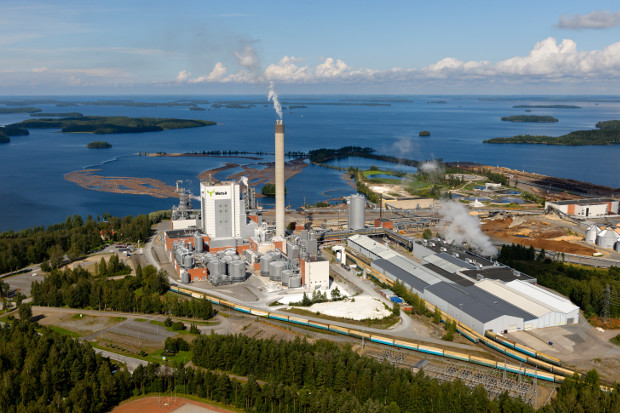Pulp

Case - Published 4.7.2014
For a long time, the paper, board and pulp industry has contributed approximately two-thirds of the value of the Finnish forest industry. The majority of production is sold as exports. One-fifth of Finland’s export revenue comes from the forest industry. The industry is referred to as “the cornerstone of Finnish exports” for good reason.
Before wood is turned into paper or board, its solid structure is broken into pulp. Timber arriving at the plant is debarked and chipped, and the resulting chips are then cooked in a chemical solution. The binding and adhesive agents which hold wood fibres together are dissolved, and the chips turn into pulp.
After cooking, the brown mass is washed and bleached over several stages. After bleaching, the pulp is dried, and surplus water is evaporated from it. The dried pulp is cut into sheets and baled, and the bales are combined into larger units of 1,000 or 2,000 kilograms for transportation. The journey of wood from the chip pile to pulp takes approximately 16 hours.
Coniferous trees have long fibres, which improve the strength of paper. The short fibres of deciduous trees make smooth paper and board with good weight properties.
Wood is utilised very efficiently in the pulp manufacturing process. In addition to fibres, pulp factories produce tall oil, turpentine, electricity and steam. Pulp plants produce wood-based bioenergy for their own needs and enough surplus for selling to local residents or to the national grid. The forest industry is by far the largest producer of bioenergy in Finland.
The chemicals and water used in the process are recycled efficiently and reused in different stages of the pulp process. Wastewater is recycled multiple times before it is finally purified at the effluent treatment plant of the pulp mill. The water treatment facility reduces the fertilizer load of water areas and the number of oxygen-depleting substances. This prevents eutrophication and oxygen depletion.
The product portfolio contains a postcard made from pulp produced at the Rauma plant of Metsä Group.
Text and photos are from the info cards in the presentation briefcase on the Finnish forest sector. The idea of a briefcase with various kinds of samples to present this diverse sector came from the young people themselves. The briefcase has been handed out at visits to upper secondary schools.
More information on the briefcase and visits: vilma.issakainen(@)smy.fi and anne.kettunen(@)forestindustries.fi.
